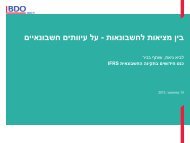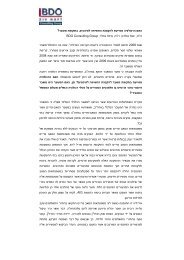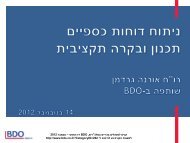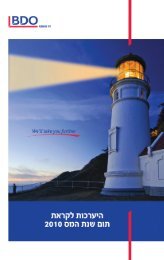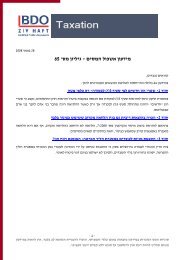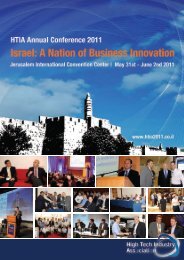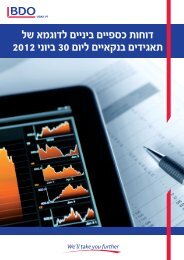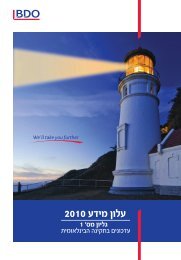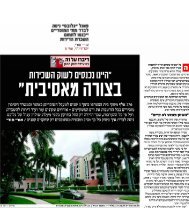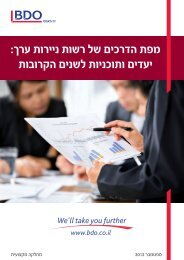preface
preface
preface
Create successful ePaper yourself
Turn your PDF publications into a flip-book with our unique Google optimized e-Paper software.
70<br />
ACCOUNTING AND AUDITING PERSPECTIVES<br />
♦ Business combinations and transactions with non-controlling interest<br />
holders. Israeli GAAP is similar to U.S GAAP, prior to the changes adopted<br />
as of January 1, 2009.<br />
♦ Impairment of assets - The Israel Accounting Standard Board published, in<br />
February 2003, Accounting Standard No. 15, based on the international<br />
practice of impairment of assets. The American practice concerning<br />
impairment is stated in FAS 144. Differences exist between FAS 144 and<br />
Accounting Standard No. 15, as to when and how to consider the need for<br />
impairment, and also in determining the useful life of an asset. In addition,<br />
Israeli GAAP, goodwill and indefinite-lived intangible assets are reviewed,<br />
at least annually, in order to establish impairment to the cash-generating<br />
units (CGU) or groups of CGUs, as applicable. US GAAP is similar to<br />
Israeli GAAP, although the level and the impairment test itself are different.<br />
♦ Derivative instruments - Derivative instruments are recognized and<br />
measured in Israel in accordance with FAS 52 and FAS 80. (FAS 52 and<br />
FAS 80 were U.S. GAAP before the effective date of FAS 133). However,<br />
the Israel Banks Commissioner requested Israeli banks to adopt FAS 133<br />
from the first quarter of 2003.<br />
♦ Compound financial instruments - Under Israeli GAAP, convertible debt<br />
(a fixed number of shares for a fixed amount of cash) is accounted for on a<br />
split basis, while proceeds allocated between equity and debt. In U.S.<br />
GAAP conventional convertible debt is usually recognized entirely as a<br />
liability, unless a beneficial conversion feature exists.<br />
♦ Embedded derivatives - Under Israeli GAAP, no bifurcation of embedded<br />
derivatives is required, while under FAS 133, embedded derivatives are<br />
bifurcated in some cases from their host contract.<br />
♦ R&D cost - Under Israeli GAAP, an intangible asset is recognized<br />
separately from goodwill if it represents contractual or legal rights, or is<br />
capable of being separated, divided, sold, transferred, licensed, rented or<br />
exchanged. Acquired in-process research and development (R&D) is<br />
recognized as a separate intangible asset if it meets the definition of an<br />
intangible asset and its fair value can be reliably measured. Non-identifiable<br />
intangible assets are subsumed within goodwill. Similarly, US GAAP<br />
requires acquired in-process R&D to be valued at fair value. However, the<br />
acquired in-process R&D is expensed immediately, unless it offers<br />
alternative future use. In addition, Israeli GAAP requires internal<br />
development costs to be capitalized, if specific criteria are met, and these<br />
are applied to all internally developed intangible assets. Under U.S. GAAP,<br />
BDO Israel



